
This one’s got an elegant fragrance, but it could use a more shapely body. That one hints of lemon, with a tinge of leather, but it leaves my tongue feeling dry.
It may sound like a wine tasting– or some kind of coarse beauty pageant–but in reality we’re in a coffee-tasting room after a tour at a remarkable resort in an organic plantation less than an hour’s drive from Costa Rica’s main airport in San Jose.
On a two-day stay at the Finca Rosa Blanca before a cruise from Costa Rica, I learned more than I have in decades of drinking coffee around the world.
The resort is the vision of a family that reshaped what was once a clear-cut mountain farm into a showcase of organic growing methods and demonstrated how charmingly a resort can co-exist with a lush tropical forest. Rosa Blanca’s owner Glenn Jampol became a pioneer in growing coffee in natural shade with organic methods.
A morning plantation tour here is also an adventure hike through lush tropical forest that dominates the plantation that adjoins the resort.
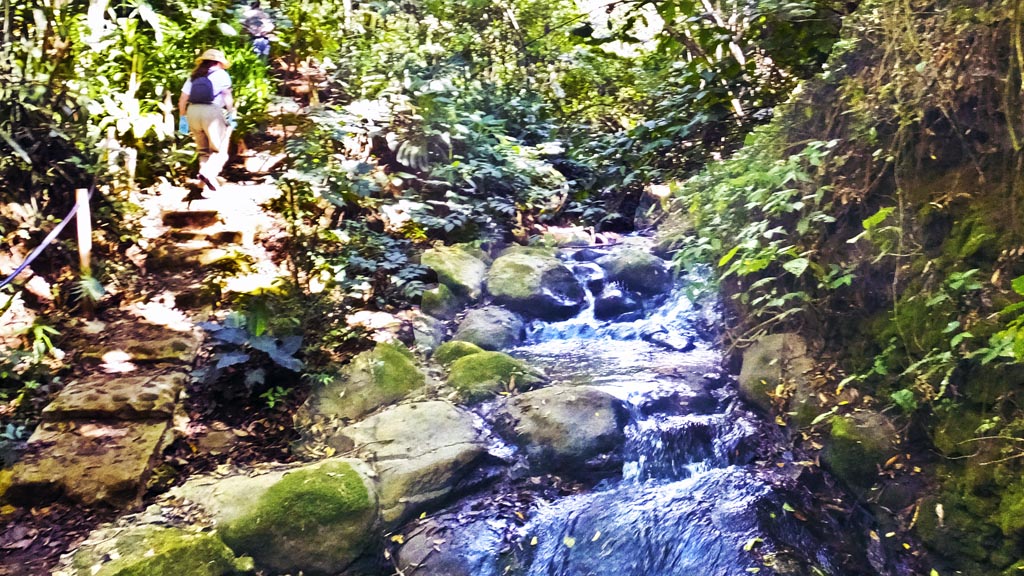
Before we set out our guide, Ullises, equips us with bamboo hiking poles. They’ll be handy for balance as we climb stony paths up the rugged slopes at 4,000 feet above sea level.
The theory of shade growing is not only practical, it’s beautiful. What at one time had been a monoculture of coffee plants on a steep slope has become a verdant tropical forest of flowering trees and lush big-leafed shrubs that provide shelter for the coffee bushes from sun and wind, helping the beans mature more slowly and develop more intense flavor.
Banana plants that help provide shade grow like weeds, in fact everything grows like weeds here. Every tree seems to have flowers as well as fruit and butterflies hovering delicately around the branches.
There are over 100 species of birds in the plantation, many in brilliant hues of blue and yellow.
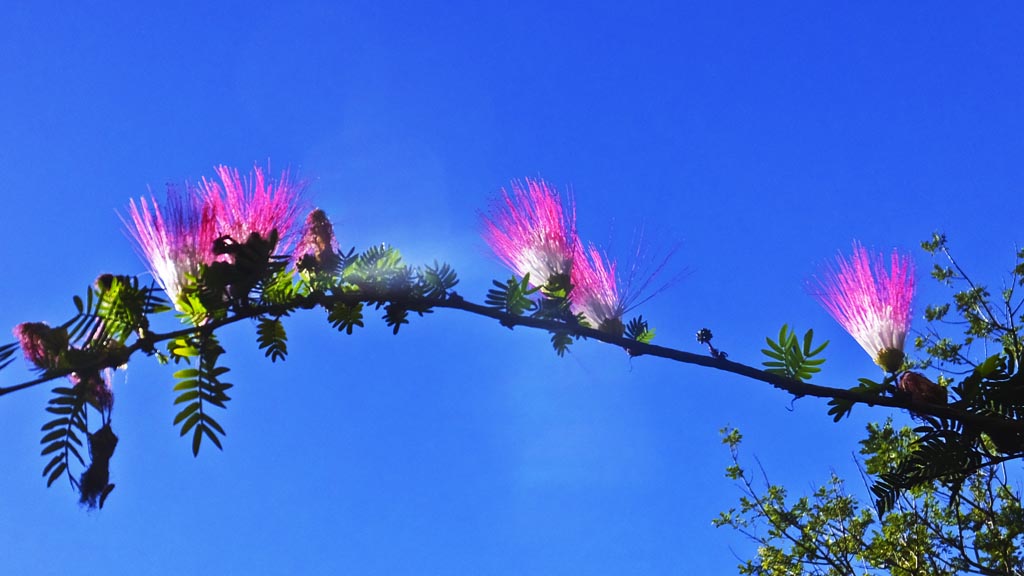
Late fall and winter is harvest time, with the beans selected by hand by workers who wear baskets that carry 20 pounds of pickings. A ripe coffee fruit is bright red with a gluey under coat that surrounds the hard bean in the center. Green berries are left on the stems to ripen.
The outer layers are stripped away and recycled as compost on the slopes and the beans that are grey before they’re roasted are spread on drying racks in Costa Rica’s incessant hot sun.
Drying is an art. Beans need to have a moisture content of no more than 12 per cent. Any more and when they’re roasted they’ll explode like popcorn as the moisture in the center turns to steam, Ullises explains.
Then they’re ready for sorting to get rid of unripe beans and stray debris before roasting, a science that was learned in generations of family experimentation, he says.
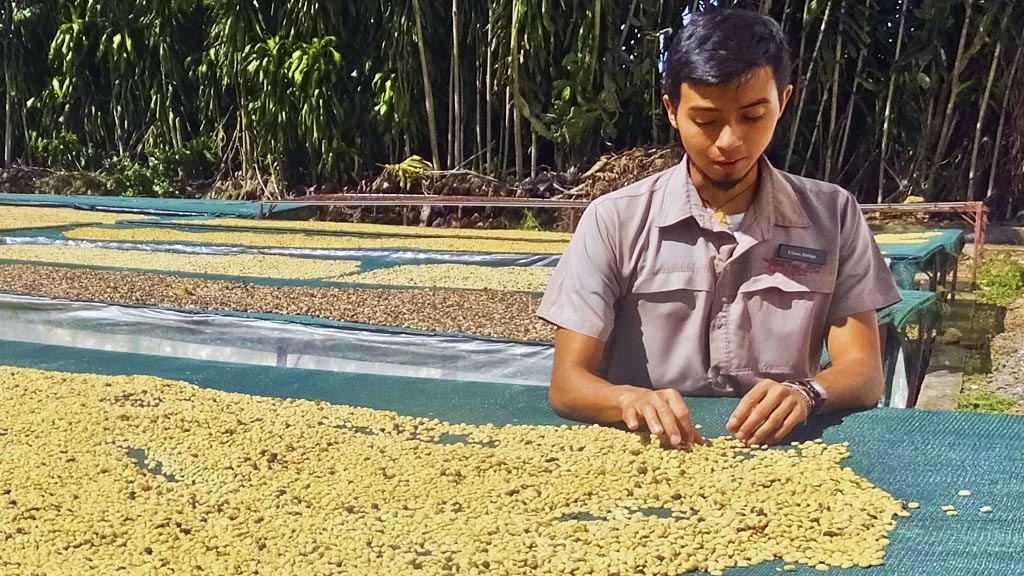
It takes 10 minutes for light roast, 12 for medium and no more than 15 minutes for dark roast. They need instant cooling as they emerge from the roaster or they’ll continue to sizzle inside and the oils can be burned.
Next comes the tasting, which requires a bit of noisy slurping, swishing in the mouth and spitting out. But it’s a fun lesson in the essentials of a perfect cup:
1) Reach for the top
The altitude at which coffee grows makes a lot of difference in its flavor. Mountain grown coffee plants mature more slowly and produce more concentrated flavor in the beans. They’re more expensive to grow, of course, and may not actually be in many coffee brands even though they are labelled as High Mountain. Costa Rica has a consistent grading system to ensure you get what the grower is promising.
2) Hot, but not hot-hot
Brewing coffee with water that’s reached the boiling point of 212 Fahrenheit can actually scald the oils in coffee and affect the flavor and aroma. The Rosa Blanca restaurant uses French press coffee makers and water that’s at just 200 degrees.
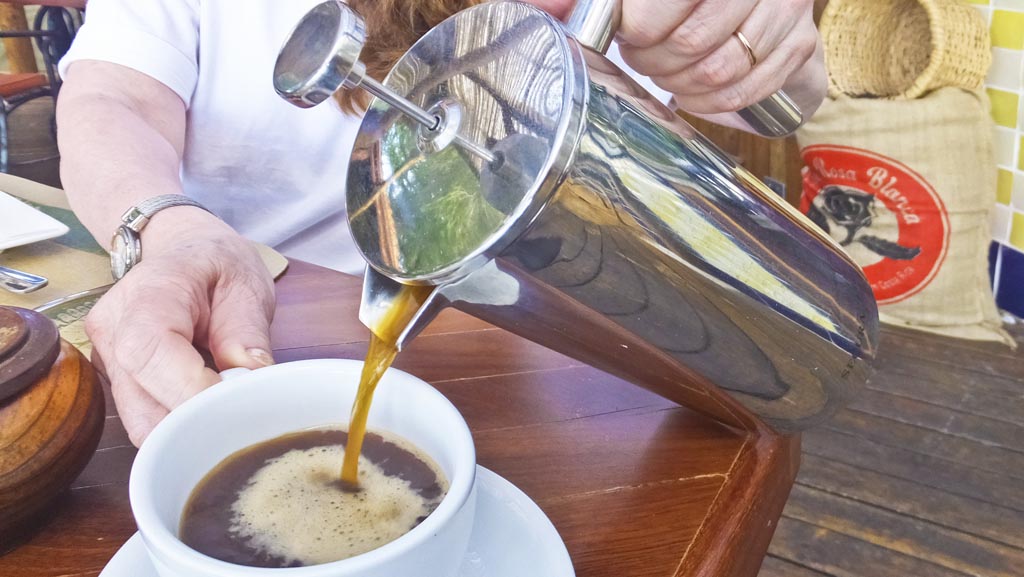
3) Darker Roast Doesn’t Mean Stronger
A dark roast doesn’t mean a better coffee or more caffeine in the coffee.
All the coffee grown in Costa Rica is Arabica, which is less bitter and has lower caffeine than the ubiquitous Robusta strain, which is the standard for commercial grinds. Arabica coffee is also naturally more acidic.
More of the acidity remains in lighter roasts, which also may have more individual character than darker roasts. Roasting coffee for longer can cook away some of the subtle flavors of coffee and beans can burn very easily. If left just a bit too long, a very dark roast will develop a burnt, bitter taste.
Another trade-off is that dark roast is more alkaline and can leave your tongue feeling drier. A light roast will promote a more pleasing saliva flow in your mouth. So Finca Rosa Blanca tends to favor medium roasting for its coffee.
4) Do a Daily Grind
It’s a myth that you should grind coffee before storing it, Ullises says. Keep the beans whole as long as possible. Once the beans are broken open, their oils are more exposed to air and can go stale faster, even if you think the bag is air tight.
5) Freezing Isn’t Your Friend
Another myth is that storing coffee in the freezer preserves it better. The process of freezing can break down oils and alter the natural coffee flavor, Ullises notes. The advice is to keep beans at room temperature in a dark container. It’s best to just buy small batches of new shipments of coffee and enjoy.
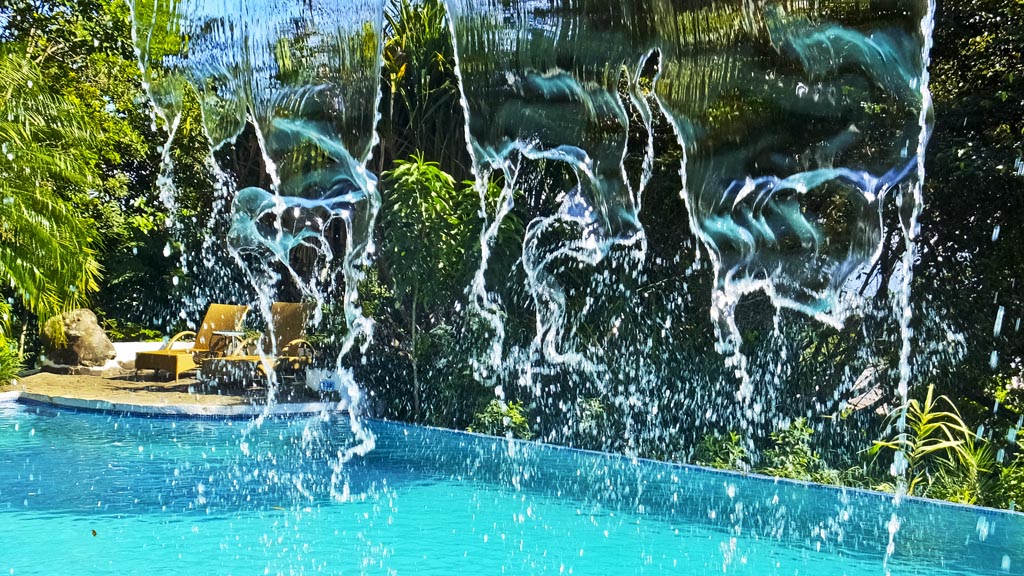
6) Vacuum Sealing Doesn’t Guarantee Freshness
Roasting causes the coffee beans to release carbon dioxide for several days. So vacuum sealing doesn’t take place until after the coffee sits for several days, which can mean it loses freshness too. A better method is packing in bags that have valves that allow gas and moisture to escape but not enter.
7) Trust Your Own Taste
As with wine, the final arbiter of what you’ll enjoy is your own tongue.
The Finca Rosa Blanca plantation is certified by the Rainforest Alliance. The resort holds a 5 green leaves award from the Certification of Sustainable Tourism of Costa Rica organization and a 3 star Blue Ecological Flag rating for protection of ecological areas. Details are at: https://www.fincarosablanca.com/en/





